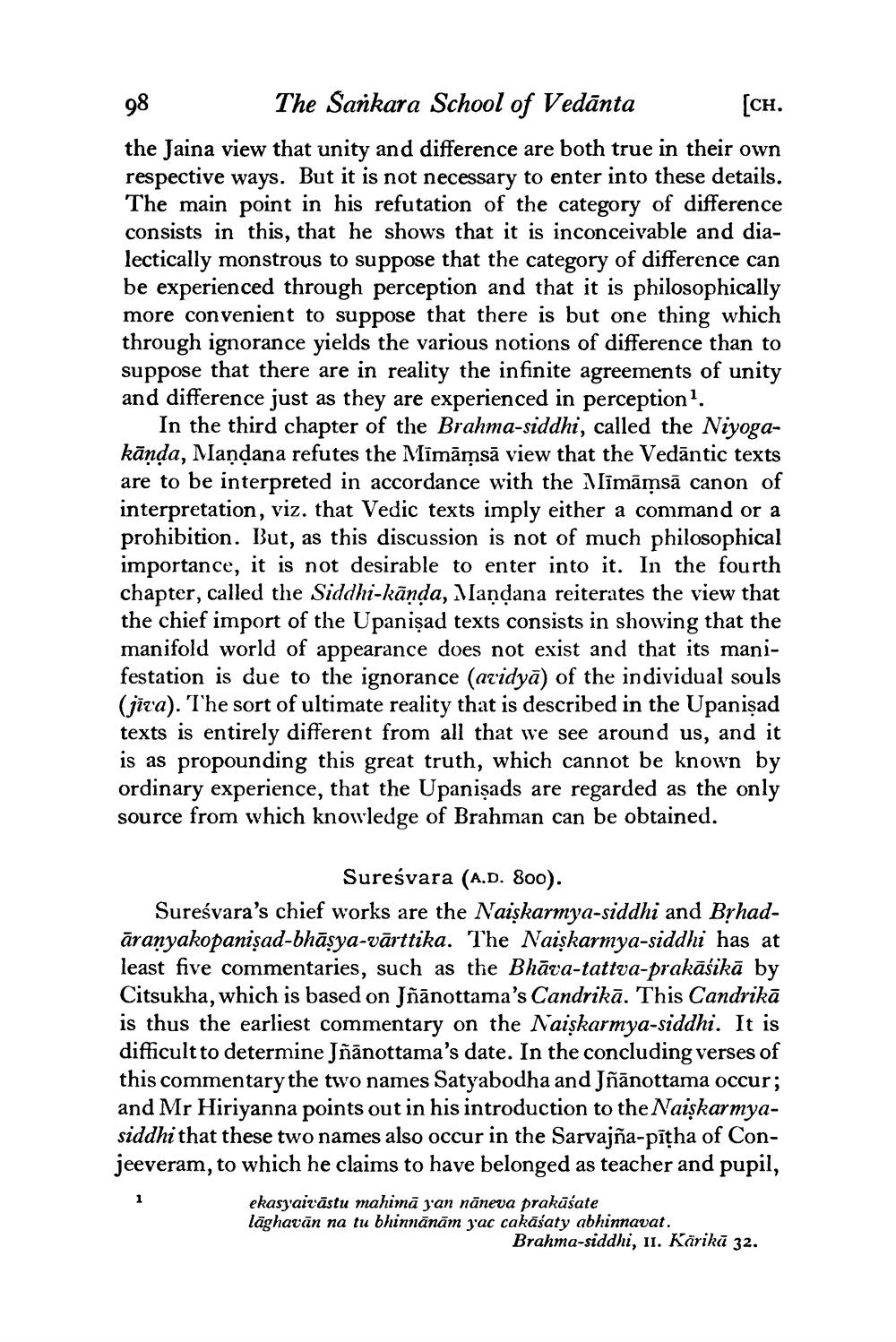________________
98
The Sankara School of Vedānta
CH. the Jaina view that unity and difference are both true in their own respective ways. But it is not necessary to enter into these details. The main point in his refutation of the category of difference consists in this, that he shows that it is inconceivable and dialectically monstrous to suppose that the category of difference can be experienced through perception and that it is philosophically more convenient to suppose that there is but one thing which through ignorance yields the various notions of difference than to suppose that there are in reality the infinite agreements of unity and difference just as they are experienced in perception?
In the third chapter of the Brahma-siddhi, called the Niyogakānda, Mandana refutes the Mīmāmsā view that the Vedāntic texts are to be interpreted in accordance with the Mlīmāmsā canon of interpretation, viz. that Vedic texts imply either a command or a prohibition. But, as this discussion is not of much philosophical importance, it is not desirable to enter into it. In the fourth chapter, called the Siddhi-kānda, Vandana reiterates the view that the chief import of the Upanișad texts consists in showing that the manifold world of appearance does not exist and that its manifestation is due to the ignorance (avidyā) of the individual souls (jira). The sort of ultimate reality that is described in the Upanişad texts is entirely different from all that we see around us, and it is as propounding this great truth, which cannot be known by ordinary experience, that the Upanişads are regarded as the only source from which knowledge of Brahman can be obtained.
Sureśvara (A.D. 800). Sureśvara's chief works are the Naiskarmya-siddhi and BỊhadāranyakopanisad-bhāsya-vārttika. The Naişkarmya-siddhi has at least five commentaries, such as the Bhāva-tattva-prakāśikā by Citsukha, which is based on Jñānottama's Candrikā. This Candrikā is thus the earliest commentary on the Naiskarmya-siddhi. It is difficult to determine Jñānottama's date. In the concluding verses of this commentary the two names Satyabodha and Jñānottama occur; and Mr Hiriyanna points out in his introduction to the Naişkarmyasiddhi that these two names also occur in the Sarvajña-pītha of Conjeeveram, to which he claims to have belonged as teacher and pupil,
ekasyaivāstu mahimā gan nāneva prakāśate lāghavan na tu bhinnānām pac cakāśaty abhinnavat.
Brahma-siddhi, 11. Kärikā 32.




